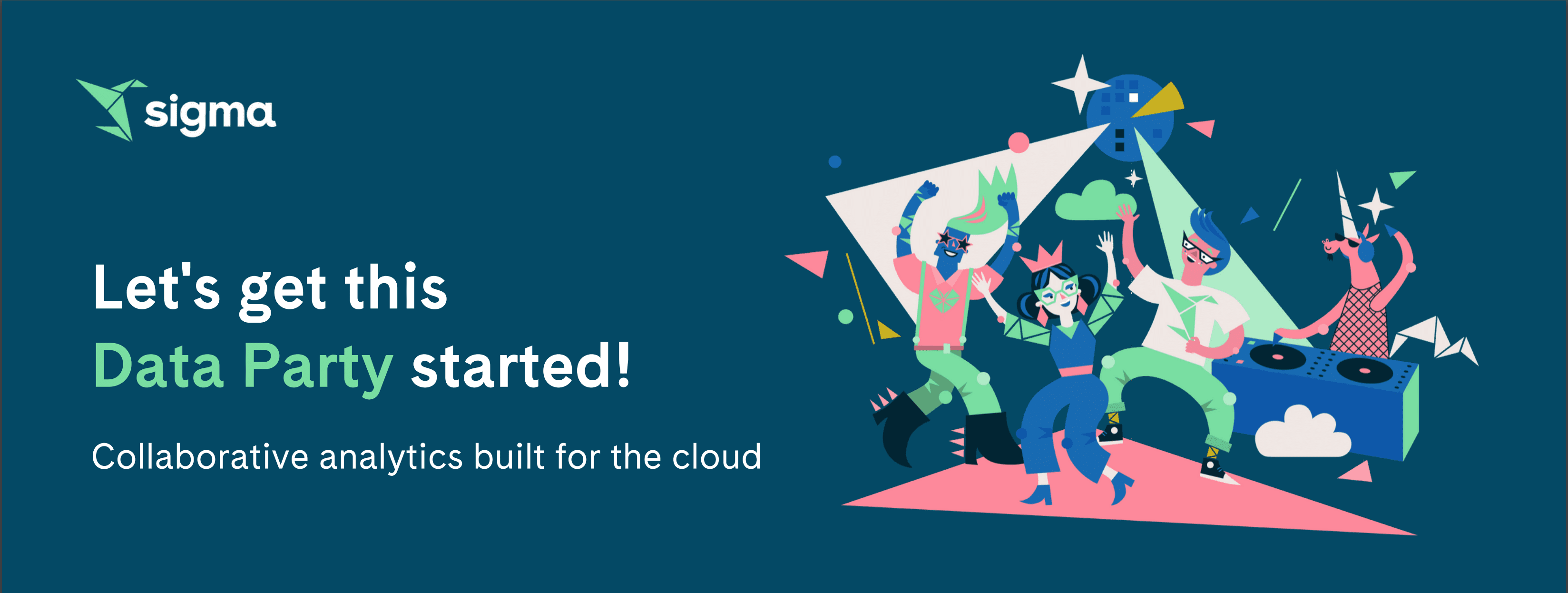Sigma Computing, an innovator in cloud analytics and business intelligence (A&BI), recently announced new features that will enable teams from across an organization to access, share and collaborate on data driven projects. Allowing those teams that are closest to the data, such as marketers, product managers, salespeople and customer service reps, to contribute directly into the wider data conversation, explore and collaborate while ensuring IT and data teams maintain control over its integrity and security.
“Every organization wants to be data-driven, but to truly be data-driven, we believe employees can’t be limited to using pre-built dashboards and reports on historical data,” said Sigma Computing Co-founder and CEO Rob Woollen.” Every employee must have secure, controlled, and real-time access to their organization’s data. Sigma provides your team with a view of your data in a format that isn’t intimidating and allows them to do their own analysis. We bridge the huge gap between the power of data holds, and the teams who need it, by empowering your teams to run, what would be complex queries in any other tool, in Sigma without needing to learn SQL code.”
According to Gartner, “in the 2019 analytics and BI Magic Quadrant customer reference survey, the modern analytics and BI adoption rate is at 35%.” Woollen and his team are determined to see that rate rise and are confident Sigma provides businesses with the controlled freedom to give people, who don’t know SQL and can’t code, the ability to securely, safely, and independently explore data, without the fear of “breaking” it or accidently deleting anything.
Sigma’s latest platform updates provides users with a user-friendly spreadsheet interface, and a robust set of user roles and permissions, which restrict access to sensitive information at the group or individual level. Making data exploration an iterative and collaborative process, by providing worksheets and dashboards that are dynamic and easy to share, so team members can build on each other’s work. Reducing the time wasted on duplicating work, and increasing the potential for new discoveries to be made
Woollen continues: “A&BI is no longer a ‘nice to have’ – but a ‘must’ for businesses who want to compete in today’s data-driven world. Organizations need to be able to make decisions quickly, and they need to make those decisions based on data from across their company.
“Sigma smashes the ‘Ivory Tower’ attitude the data that many organizations have to contend with in traditional A&BI tools, where a few SQL-savvy data experts deliver insights to the rest of the business. That sort of approach only creates unnecessary bottle necks and delays. Ultimately driving teams to download data into Excel to do their own analysis, which only leads to governance issues, security breaches, data inaccuracies, and further entrenched information silos.
Engage with Data in Powerful New Ways
Sigma’s visual data modeling was first announced in June 2019, along with its SQL Runner and one-click Snowflake integration. This feature provides a single, collaborative environment for both data analysts and domain experts that is secure and governed in cloud data warehouses (CDW). Data modeling defines how data is related, what it means, and how it flows together. An effective model makes data more approachable and consumable so that business users know they are using the right information in the right context.
Sigma’s modeling capability allows data teams to easily build centralized data definitions and provide curated starting points for business leaders and domain experts. Data analysts and admins can build datasets using SQL or Sigma’s user-friendly interface in minutes, eliminating the need for any coding languages. Meanwhile, teams in every corner of the organization benefit from instant access to trusted data sources and consistent metrics that provide business context for faster, more informed decisions.
Ensuring Data Can Be Trusted
The lineage feature provides a window into datasets past and present so it is clear where the data comes from and who has touched the data at any given time before it is queried. Knowing the source of any data is important for trusting the data and the downstream visualizations a business team might use to make real-time decisions.
The graphical view of upstream and downstream dependencies for datasets provides a system of governance, compliance, and overall data quality built into the system. Users can automatically understand data relationships and data genesis. When multiple people and groups within an organization are accessing data, it is important that regulation and compliance remain priorities and that the data explored and used can be trusted.
Point-to-Point Sharing
Point-to-point sharing provides shared access to data in worksheets and dashboards using a Google Drive-like interface. Worksheets and dashboards need to be dynamic and easy to share so that team members can build off of each other’s work, which reduces the time wasted on duplicating work, expedites the time to insight, and increases the potential for new discoveries to be made.
About Sigma
Sigma is analytics built for the cloud. Trusted by data-first companies, Sigma provides live access to cloud data warehouses using an intuitive, spreadsheet-like interface— empowering business experts to ask more of their data without writing a single line of code.
To learn more about Sigma, visit www.sigmacomputing.com or join the conversation on Twitter @SigmaComputing.
To learn more, please visit here.



































